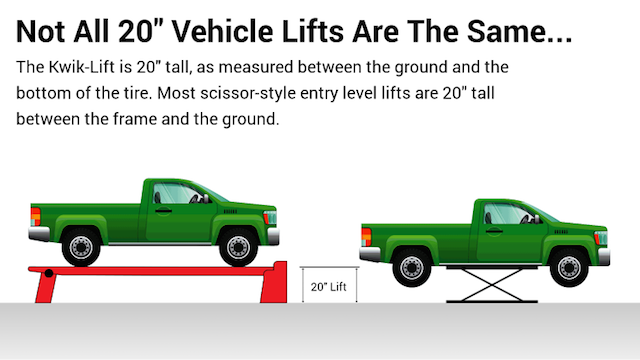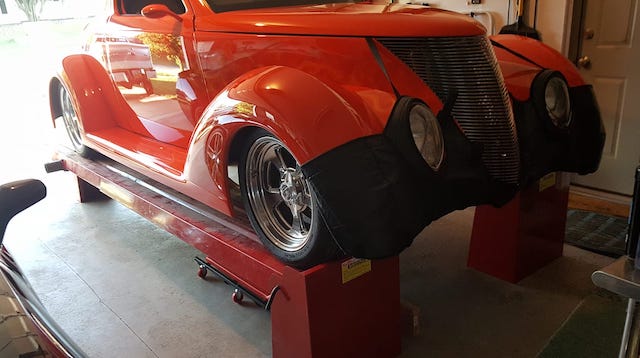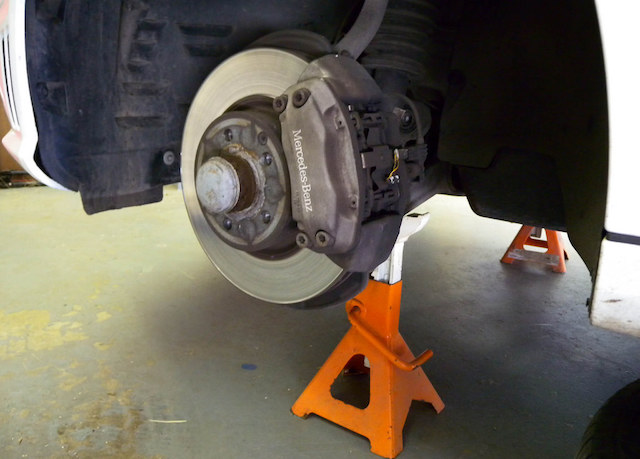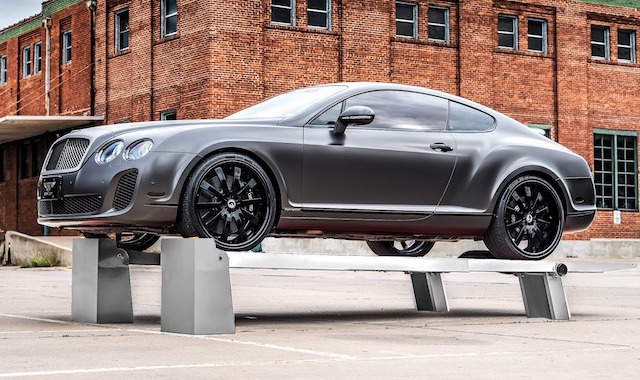
Maintenance is an important factor to consider when shopping for a car lift to put in your home garage. Some types of car lifts require a lot of maintenance; others don’t.
Before picking a car lift for your home garage, here’s what you need to know.
1. Kwik-Lift
Maintenance level: Low

A Kwik-Lift is a portable drive-on car lift specifically designed for home garages. There are no hydraulics or electronics, so there’s almost nothing to worry about as far as maintenance is concerned. Just keep parts lubricated as necessary, and make sure to paint any exposed metal. That will prevent rust, which is just about the only thing that can harm the solid steel Kwik-Lift.
2. Entry-Level Scissor Style Hydraulic Lifts
Maintenance level: High
Entry-level hydraulic lifts require a surprising amount of maintenance.
- Every month, you have to lubricate all the hinges and inspect the lift mechanism for problems
- Every 30-90 days, you have to check the hydraulic fluid for contamination, and also check fluid levels (as most of these systems tend to leak).
- If you’re not using these lifts regularly, you usually need to drain the hydraulic fluid during storage or risk a big leak.
- Because most entry-level lifts use cheap hydraulic components, a system ‘refresh’ is needed every few years. As part of this refresh, you’ll need to replace hoses and fittings as they begin to swell or leak. You may also need to replace the lift motor, which may or may not be possible depending on the brand you buy (some brands don’t sell replacement motors).
Of all the lifts you can buy, the entry-level hydraulic lifts require the most work to maintain. This is mostly because they use cheap hydraulics, which are inherently high maintenance.
3. 2-Post and 4-Post Lifts
Maintenance level: Moderate
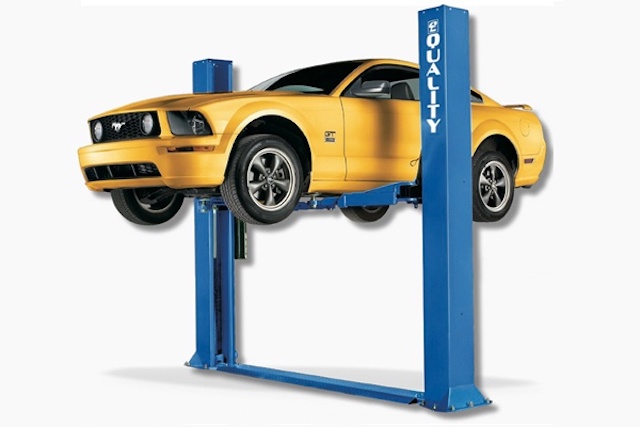
2-post and 4-post home lifts require maintenance and inspection that is consistent with commercial use. That means doing a monthly inspection that includes:
- Checking the arm adjusting locks
- Inspecting and testing the cable connections, bolts, pins, and safeties
- Inspecting the entire cable system and replacing the cables, if necessary
- Testing the cable tension and adjusting it, if necessary
- Lubricating the posts
- Retightening the anchor bolts, if necessary
- Ensuring that all of the posts are square and straight
Additional maintenance includes:
- Lubricating the cables every 3 months
- Replacing the cables every 3 to 5 years
While there’s a bit more work involved in the monthly inspection, the odds of a home user finding a problem with a commercial grade 2 post or 4 post life are low. A commercial grade 2 or 4 post lift is going to hold up just fine for most home DIY use. Unless you’re running a shop out of your garage, your inspections are going to take just a few minutes a month.
And, unlike entry-level hydraulic lifts, there’s no constant fight with fluid levels, no leaks, no draining pressurized fluid, etc. when you buy a commercial grade 2 post or 4 post lift.
NOTE: We do not recommend buying a 2 post or 4 post lift that isn’t commercial grade. Commercial 2 post and 4 post lifts are very affordable – most of the “home” 2 post or 4 post lifts cost the same as a commercial grade lift.
The Importance of Lift Maintenance
If you’re entertaining the idea of buying a high-maintenance car lift without planning on maintaining it, don’t do it! Lift failures occur when either:
- Lifts don’t perform the way they’re supposed to (admittedly, this is a concern on entry-level lifts, which have been known to fail during lift rise or lower)
- Lifts aren’t maintained
If you do the maintenance – and exercise caution when using a lift – your odds of having a problem are next to nil.
Be safe!

